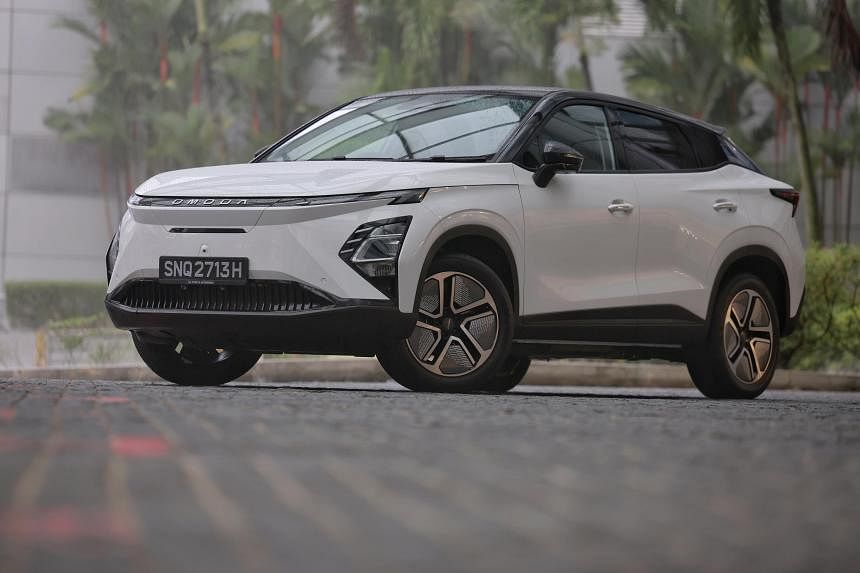SINGAPORE – As far as driving assistance features go, the electric Chery Omoda E5 has everything anyone can ask for – from watching out for cyclists to adaptive cruise control to making sure that the driver at the wheel is paying attention. And most of these work well too.
Can this be the same Chery that made the terrible QQ two decades ago? It is. But the Omoda feels like a world away from the cheap QQ hatchback.
The Omoda E5 is a compact crossover, roughly the size of the Nissan Qashqai. Its army of sensors constantly looks out for anything that may be out of line, whether it is another vehicle drifting into its path ahead or into its blind spot behind. It will alert the driver if the car is going over the speed limit or over the lane marking.
A box peeking just over the steering column, behind the wheel, watches the driver. It will trigger a chime if it senses that the driver is distracted.
Looks-wise, the Omoda is distinctive. Its main headlights sit at the extreme corners of the bumper. Horizontal creases along the flank of the body exaggerate length. Its 18-inch alloy wheels have plastic covers between the spokes, probably to improve aerodynamics.
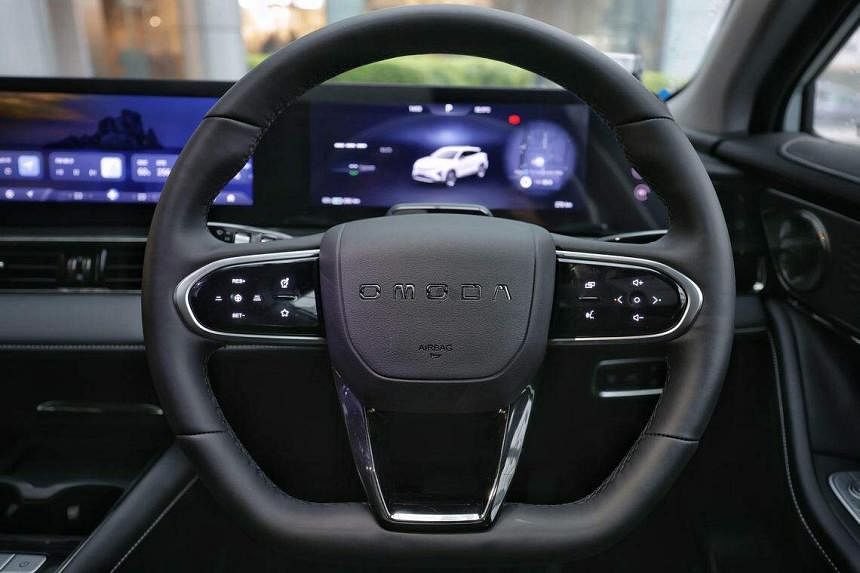
The overall effect is a car with outsized road presence. Against the BYD Atto 3, which is its key rival, the Omoda looks bigger even though it is actually shorter in length by 31mm.
The panel gaps on the test car are consistently tight, especially the way the bonnet lines up perfectly to the front fender.
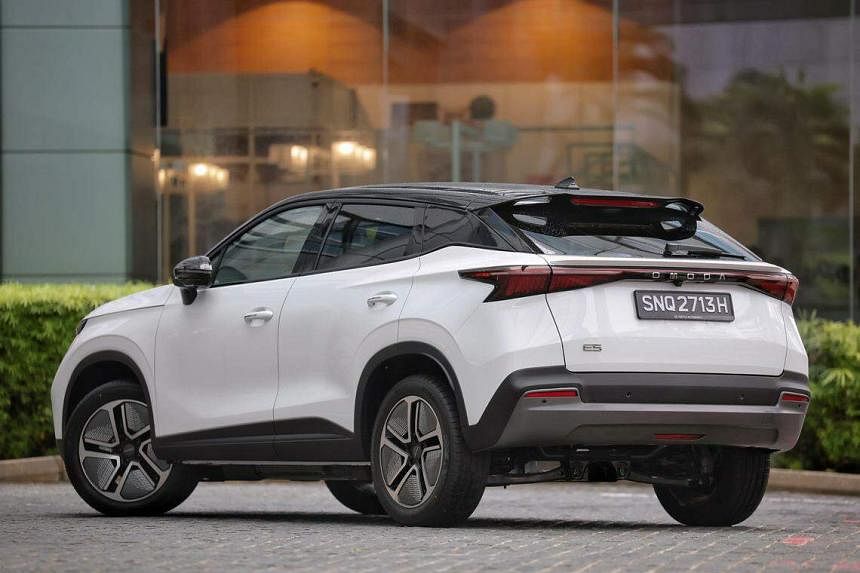
The impression of quality continues into the cabin. The infotainment screen is responsive and the control stalks work with a satisfying click when actuated. The ledge below the air-conditioning vents is clad in a soft leather-like material and serves as support for the wrist when you are using the infotainment touchscreen.
That said, the manual sliding sunshade for the sunroof and the louvres on the air-con vents feel flimsy.
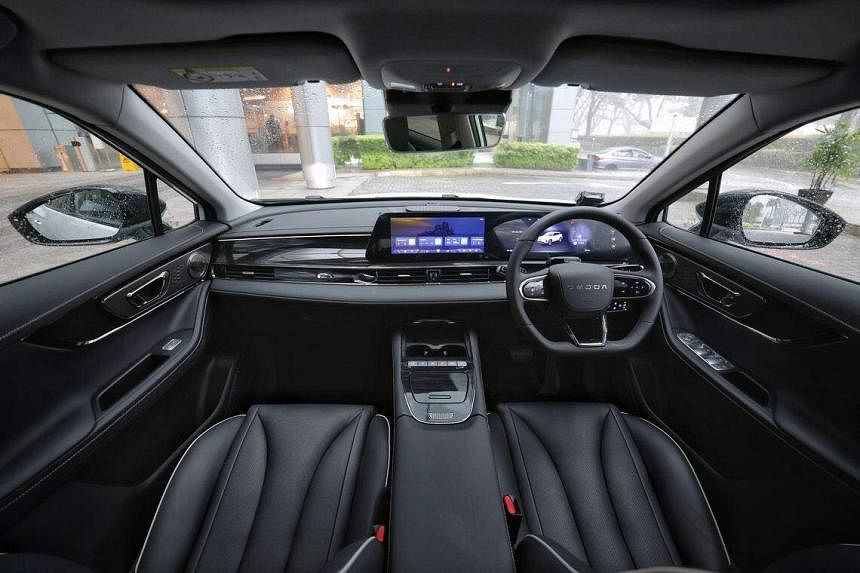
Curiously, the gloss black veneer in front of the passenger has an illuminated sketch of the Omoda’s profile with the Chinese character for “car”.
Nearly all the major controls are in the infotainment touchscreen, including those for the air-con and radio volume. Helpfully, there is a hotkey on the steering wheel to let you skip a few swipes and pokes at the screen. Otherwise, saying “Hello Chery” activates voice control.
Getting the system to connect to an Apple iPhone to activate CarPlay is a cinch. This is especially useful when the car fails to connect with the phone automatically a few times during the three-day test drive. I had to reconnect the phone to get CarPlay to work again.
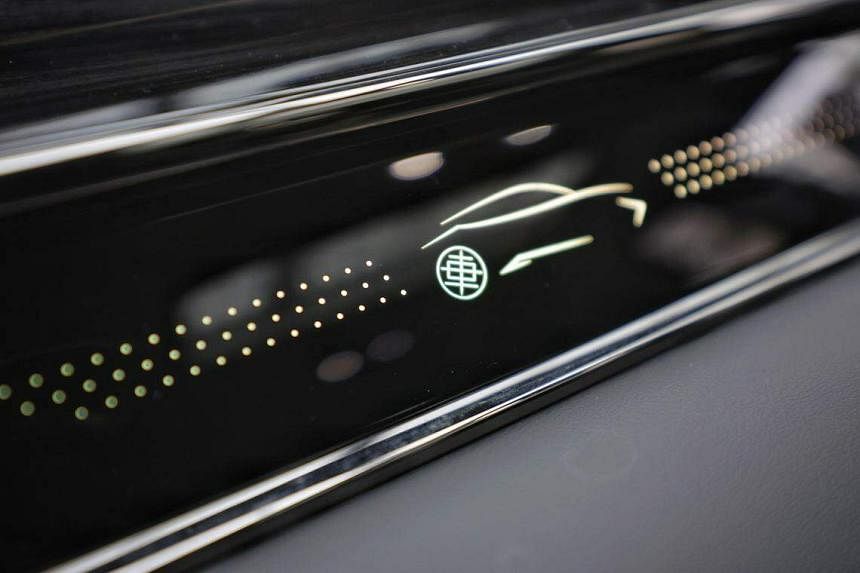
Driving off is a straightforward affair. There is no start button. Just flick the gear stalk on the right side of the steering column and you are off. At the end of the drive, pushing the Park button on the end of the stalk engages the parking brake. Get out and the doors lock automatically, closing the windows and sunroof too.
The Omoda has double-glazed front windows, which is something more associated with high-end premium cars. This cuts out road and wind noises, and it seems to work on the move. At standstill, it is possible to hear the air-con compressor working really hard to beat the current hot spell that Singapore is in.
A full charge of the 61kWh battery should give a range of up to 430km. The power consumption during the test drive is around 15.7kWh/100km, not far from the claimed consumption of 15.5kWh/100km.
I manage to only get the trip computer to show the mileage travelled and average speed. The energy consumption figure is reset at the beginning of each journey.
The electric vehicle (EV) can take a charging speed of up to 80kW. This means that it is possible to fully charge up the Omoda’s battery in 46 minutes. But the majority of fast chargers in Singapore are rated at only 50kW, so it will take around 72 minutes. In any case, plugging in during an hour-long lunch break should be enough to cover a few days’ worth of driving.
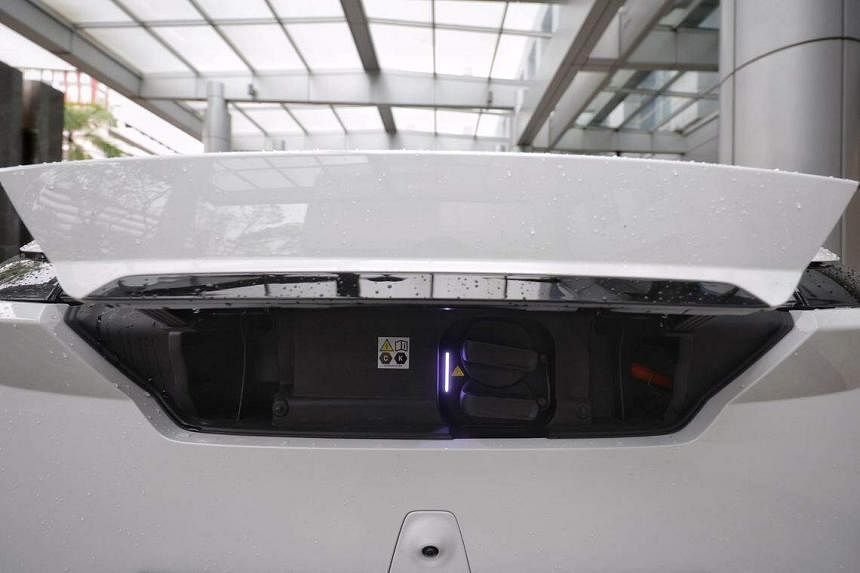
Like many such EVs, the drive is more competent than fun. The body does not lean too much when pushed, which is good, but the steering seems to be more highly geared than usual, so the steering wheel needs slightly more lock to turn the tyres. It is easy to get used to this, but it makes the car feel less agile.
On paper, the 150kW Omoda takes 7.6 seconds to get to 100kmh from rest. This is not shoddy for a compact sport utility vehicle, but probably not really quick enough to justify being in the Category B certificate of entitlement (COE), which is meant for EVs with more than 110kW of power.
A less powerful version, which qualifies for the less costly Category A COE, is expected to be available later on. This will make the Chery more desirable with a lower price tag and, hopefully, just as many features.
Chery Omoda E5
Price: $179,888 with COE
Engine: Single synchronous motor with 61kWh lithium-phosphate battery
Transmission: Single speed
Power: 150kW
Torque: 340Nm
0-100kmh: 7.6 seconds
Top speed: 172kmh
Fuel consumption: 15.5kWh/100km
Agent: Vertex Automobile
Rating: 2 out of 5 stars
